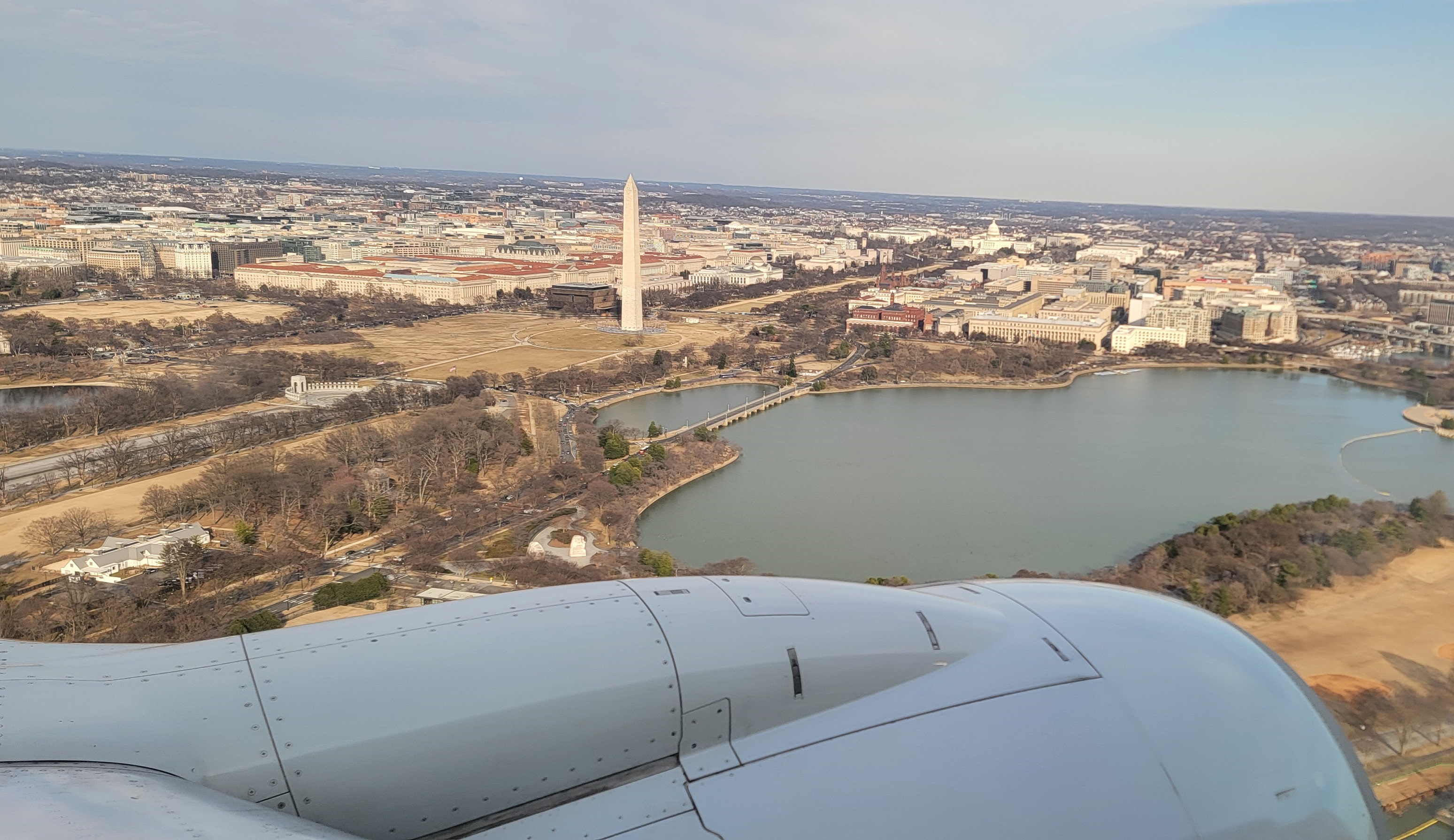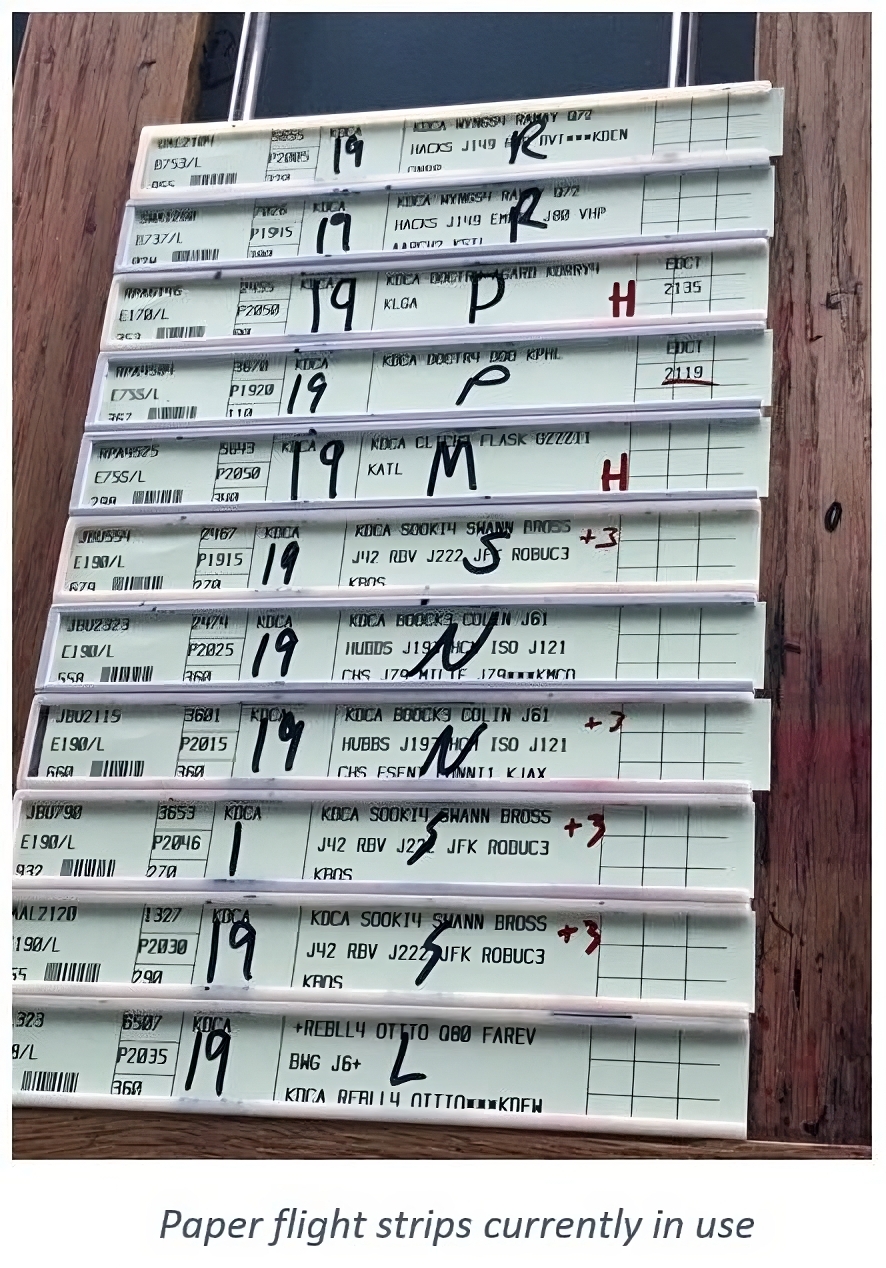The American Airlines 5342 disaster at the beginning of the year still looms large. The airline reported that they lost $200 million following the disaster during their earnings call last week.

Landing At Washington’s National Airport
Following the earnings call each quarter, American Airlines executives gather for a ‘State of the Airline’ event with employees. Copies of this internal event regularly get leaked to me, which are fascinating to listen to.
Not surprisingly since executives were reviewing the quarter, the 5342 disaster was background to much of the discussion. When they started talking about the team that’s been set up to support the families of victims, I broke down in tears. I just could not stop crying. Here’s why.

National Airport
How American Airlines Is Working With The Families Of Flight 5342
I’m usually pretty stoic. I’ve dealt with a lot of death and tragedy in my life. I’ve mostly swallowed it, visibly unaffected. But sitting alone playing this discussion I broke down.
Jim Carter, who came out of retirement and is serving as Vice President – Care, Continuity & Global Outreach, shared details of the office that was created to care for the families (and employees and communities) touched by flight 5342.
They are transitioning from the CARE Team to longer-term support.
The team is talking to several of the families every day, trying to solve issues that come up “one place for that work to come into and to manage the relationships with these families.”
This also allows for “business continuity” which prevents distraction of leaders across the company from the airline’s priorities. They are single point of contact for families.
Answering “so what are you actually doing with the families?” he offered that “a lot of expenses came up in Washington” for families, dealing with receipts and funerals. There’s still some of that. But the needs are ognoing.
This past weekend we got an email saying ‘Hey I’m going to fly again, but I’m concerned. I’m concerned about flying.’ so we’re going to set up a mini-meet and greet for the family, have the captain or first officer meet the family when they board.
That’s when I cried. Maybe it’s because I lived in DC and drove past this airport twice a day on my work commute, maybe it’s because this is my most frequent airport and I know many of the crew based there. But maybe it’s just feeling for the family member who just went through this three months ago, who needs to travel, and it triggered memories of 9/11 and flying days afterward and what everyone felt whether they were directly touched by losses that day or not.
Carter shared that “the one criticism I’ve heard from the families, if I’ve heard anything” (that could be called criticism), “they didn’t want to end their relationship with American Airlines..the families were still asking to interact with our CARE team.”
What’s Known About The 5342 Disaster
On January 29, 2025 at 5:38 p.m. Central: American Airlines Flight 5342, a Bombardier CRJ700, departed Wichita, Kansas, bound for Washington National with 60 passengers and 4 crew members.
At 8:43 p.m. Eastern they contacted Reagan National Airport air traffic control while on visual approach to Runway 1. The controller requests the crew switch to Runway 33, which they accept and are cleared to land.
Three minutes later, air traffic control alerts a U.S. Army Black Hawk helicopter (PAT25) to the presence of the CRJ700 jet circling for Runway 33. The helicopter crew acknowledges visual contact and requests visual separation, which is approved by ATC.
One minute after that, the controller asks the helicopter crew if they still have the CRJ in sight, with a radar conflict alert audible in the background. The airliner receives a “traffic, traffic” warning from its TCAS system.
Less than a minute later, ATC instructs the helicopter to pass behind Flight 5342. The helicopter crew again acknowledges visual separation, but may have missed part of the “pass behind” instruction. Seconds later the CRJ700 pitches up, possibly in an evasive maneuver, and both aircraft collide at an altitude of 278 feet above the Potomac River. The helicopter explodes, and both aircraft crash into the river.
Here’s a radar screen display of the collision from Aviation Herald:
And here’s very disturbing video from the scene:
Only one controller was managing both fixed-wing and helicopter traffic at the time, and for an extended period. The Black Hawk crew may have missed or misunderstood key ATC instructions, while flying above the 200-foot maximum for helicopters on that route. The helicopter pilot at the controls failed to follow instructions given to her in the cockpit. She was told to turn left to avoid the jet. She did not turn left.
Ultimately the Black Hawk helicopter failed to maintain the required altitude and did not execute proper visual separation.
This is a tribute to flight attendant Ian Epstein who was working flight 5342:
It’s Time To Do Something About This
We’ve become complacent. There were years of helicopter near-misses leading up to the tragedy. This was a known risk and bureaucratic inertia stood in the way of doing what everyone knew needed to be done. There are hundreds of near-collisions a year between aircraft, and little has been done.

The FAA has been struggling to upgrade its technology for decades. Staffing shortages are self-created and solutions have been blocked for special interests.

5342 did not have to happen. The next air disaster doesn’t have to either. Some progress is being made on controller training. We’re decades behind Canada (and most of the world) on tech. There are solutions, like off-the-shelf software in use in Europe and elsewhere; remote towers; bond financing (requires the air traffic organization be part of a separate entity); and putting an end to having the same agency regulate air traffic control and carry out the service (the FAA regulating itself).


Well done, American Airlines. This was a tragedy and an accident. I feel for the victims and their families. Hoping they can find peace and healing. Still, the airline and the government should do the right thing and continue to provide meaningful support as long as it takes. I hope the NTSB is diligent, that we learn from this, and that nothing like it ever happens again.
a company pays the price for government ineptitude both w/ ATC and the military.
Who knew such a thing could happen.
and the DOT head says a bunch of money will be spent on more and higher paid controllers and a technology rebuild.
the most impactful thing this administration does for the airline industry might be fixing and properly staffing ATC.
I wonder what AA does?
Help with valuation for an estate tax return? Help with finding yard work help because Dad was the one who did yard work? Help with finding a roof contractor because Dad did that kind of search? Psychiatric counseling? Funeral arrangements, in contrast, is relatively easy.
Curious, not critical.
I have plenty of healthy criticism for AA. Hearing that they are doing right by these families, especially when the tragedy was nothing of their doing, is a breath of fresh air. When normally AA is focused on profit above all else, it’s nice to hear they are taking good care of these families despite heavy losses. Well done, AA.
I’m glad that AA obviously cares. I expect the neither DCA nor Joint Base Anacostia-Bolling to care. I’ve strangely experienced near misses at DCA, myself, and I was shocked this year to learn the frequent and decades long near misses between helicopters and aircraft at DCA. I do take comfort now in my frequent passenger flights at DCA that those absurd helicopter flights have stopped.
Adding another well done, American Airlines.
In a way I’m still processing too. Like you Gary, passing over the Potomac and by the airport regularly for decades definitely hits a little different. Having flew out of DCA an hour before it happened still feels surreal.
Can never say enough whether it’s for leisure or business we can’t take for granted how fortunate we are to experience the magic of air travel as much as we do. So tragic. We need to do whatever it takes to make sure nothing like this ever happens again. Safe travels everyone.
In January of 1982, I landed at DCA, rented a car and drove across the 14th street bridge. 15 minutes later Air Florida crashed into the Potomac and the 14th st bridge.
I was pretty traumatized for a few days, knowing that I was so close to that tragedy. Shows that incidents like that can affect people not directly involved.
My kudos go out to AA for stepping up and helping the families of the passengers on their flight.
I am not the biggest fan of AA but the way they have handled this has been very respectful and classy. Regardless of anything else AA has or will do, they are demonstrating that when it matters most they can and will rise to the occasion. The passengers who perished and the people they leave behind deserve no less.
Parker giveth, and now Parker taketh away…
What is both tragic and infuriating about AA5342 is that this was entirely preventable. There are a lot of people with blood on their hands but are too obtuse to even realize it.
For decades, Congress and Presidents have used the FAA and ATC as a tetherball, failing to take critical actions and make necessary investments in people, process and technology to ensure a catastrophe like this never happens. Why? Because short-sighted politicians and voters believe the government should spend a little as possible on infrastructure. Well folks, this is what happens when you are penny-wise and pound-foolish. Sadly, can’t say I’m surprised in modern-day America.
This. Was. Entirely. Predictable.
Politicians had a chance to prevent these deaths. Instead, they chose money and votes over people. Every single politician who has opposed ATC modernization and every single politicaisn who want to blame this on DEI should be rounded up, paraded on to The Mall in DC and have to look the victims’ loved-ones in the eyes every day and say “money and votes were more important to me than the life of your loved one.”
Time to stop with the “thoughts and prayers” and time to start moving to accountability.
I’ve been watching how American acted as this tragedy unfolded. It’s been burned in my memory how airlines like Continental Airlines back in 2009 seemed to defer responsibility onto it’s commuter partner Colgan Air during it’s crash in Buffalo or how in other situations airlines would bring paint to a crash site to blank out the brand markings on burnt fuselages.
What I heard in the days that followed from the DCA crash, was American fully owning the tragedy as their own, and while acknowledging PSA as the specific partner, making no differentiation between the carriers in terms of responsibility or loss. American absorbed the tragedy as it’s own.
American did the responsible thing during the immediate aftermath of the accident in being front and center. It’s heartening to read they are continuing to do the right thing for the families who must deal with this void in their lives.
Other airlines should take note…this is how carriers should act when the unthinkable happens.
@BigTee — The people at those places definitely do care deeply. Of course, inanimate objects (like an airport or military base) can’t ‘care,’ but the human beings are mortal and express empathy and compassion, too, as we all should. I can’t speak for the military base, but I’ve traveled through DCA, and the people there were absolutely shaken by this incident. You are correct that it could have been any of them, or any of us, since many here do travel quite frequently. No need to denigrate anyone.
@derek — Let’s pretend you indeed ‘curious, not critical,’ then please, re-read Gary’s post above, discussing the new long-term teams, offering financial and emotional support, for instance to family members of the victims who are traveling again for the first time since the incident. Yet, I’m not really ‘buying’ your sincerity here, because I recall your comment on Gary’s post, entitled “American Airlines Crisis Response Reaches Every Corner—Even Onboard Credit Card Sales Are Paused,” from January 30, 2025, in which you said: “They should just deny that the crash was American Airlines. When there’s good news, we are all AA. When there’s bad news…that was PSA not American.” So, were mocking AA then, and/or still mocking them now? I’m just guy, not with the airline or this website, but I see through the games folks play. I’m tired of it.
@Mike — You and @derek seem to agree on the shifting of blame to subsidiaries (in the past), but that has not happened here. American Airlines seems to have learned, and is taking a more honorable approach. One could argue that Delta has also stepped up in their response to 4819 incident in Toronto in February (thankfully, all survived there).
@Parker — Well said. I’m done with ‘tots and pears’ and ‘so-and-so take the wheel.’ We need accountability, transparency, and real solutions, investments, legislation, not scapegoats.